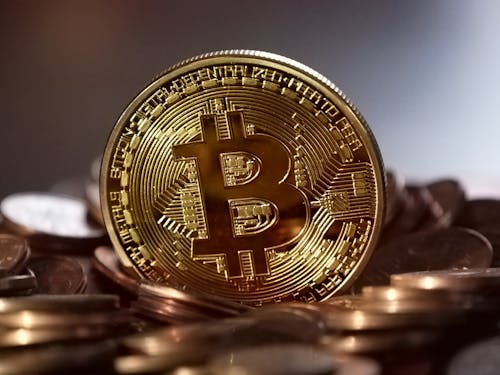Bitcoin Prediction: Fool’s Gold Or Future Of Currency?
 This article was written by the I Know First Research Team.
This article was written by the I Know First Research Team.Psychology shows that we, humans, tend to like those that are like us, those that share certain qualities with us, in other words. Thus, it is probably no surprise that Elon Musk, a brilliant entrepreneur who is no stranger to controversy, seems to be fond of cryptocurrencies, a technology that is brilliant in its nature with even more controversy around it. Or, at least, that is what he said in an interview, forecasting a grim future for conventional currencies: these would have to cede the throne to the mighty crypto, since crypto just works better as means to transfer value. Does this Bitcoin prediction mean that crypto is to be the currency of choice for everyone from tomorrow and on? Not necessarily, but this does set the stage for an interesting discussion about cryptocurrencies, and Bitcoin, their mighty forefather, as an alternative to fiat.
But before we go on to this discussion, there are two things we need to do. First, let us point out very quickly that, well, Musk also said he only holds a minuscule sum in Bitcoin, and only because he got it from someone else. Also, Tesla is planning to go on crypto adventures because mining Bitcoin consumes too much energy these days.
This might sound a bit weird to those who have not really looked into Bitcoin before. After all, how exactly do you mine currency, and why do you need so much energy for it? And this is why the second thing we will do before having this discussion is quickly go over the history of Bitcoin – just for those who are late to the party…
And what a party it is.
What’s The Buzz With Bitcoin?
Bitcoin is, without any doubt, the world’s most famous cryptocurrency – a virtual medium of exchange that utilizes tough-to-crack cryptography and decentralized ledgers to conduct transactions. The cryptocurrency is normally not regulated by a single institution. This decentralization normally comes on the back of the blockchain technology, which is the ledger that we just mentioned; what is peculiar, though, is that this ledger is distributed between hundreds of computers and open to everyone.
Bitcoin is obtained through a process called mining. There is, of course, no actual mining involved: instead, it is all about computers crunching the numbers to solve a highly complex mathematical problem. When the problem is solved, a new Bitcoin is emitted. The difficulty goes up with every new Bitcoin minted, to make sure there are no sudden troves of Bitcoins hitting the market. This is why, when it comes to cryptocurrencies, the important factor to look at is the so-called hash rate, or, to put it simply, the speed at which your computer mines crypto. Hash rate also refers to the total computational speed of a whole cryptocurrency network.
Now that we have established the basics, the next big thing to cover is the history of the dollar to Bitcoin rate. When the whole affair started, which was in the early 2010s, its exchange rate was minuscule. Bitcoin was something marginal, a cryptic toy for geeks and their likes. But then, it started to pick up the pace.
As the word spread around the Web, new disciples joined the crypto movement, lured by the promise of anonymity inherent to the idea of an unregulated currency. This anonymity was coupled, perhaps a bit counter-intuitively, with a great degree of transparency: you could use the open ledger to trace any coin from wallet to wallet, even though the accounts themselves would be anonymous. A surge in interest resulted in Bitcoin rising all the way to $20,000 by late 2017. The excitement was so real that whole companies were established just to mine Bitcoins in mining shops, where a whole building would be full of PCs crunching the numbers. And that is not to mention the many private farms, comprised usually of a bunch of GPUs stacked together.
But then, Bitcoin crashed, bounced back for a brief period, and crashed once again in a reversal as dramatic as its rise, dropping all the way to less than $4,000.
After this rollercoaster of a ride, Bitcoin is slowly crawling back up again; its exchange rate is currently bouncing around the $11,000 mark, with the current trend being up. While there are fears that the current upwards movement is nothing but a bubble, there are also those who think that this is not the same story all over, because this time, Bitcoin’s rise is fueled mostly by institutional investors.
A Currency In The Making?
So is Bitcoin the currency f the future? Is it time to throw out your quality leather wallet and brace for the crypto-age? Well… Probably not. Yes and no, to be more precise.
The first reason why we think so is also why Tesla has not gone into crypto: mining takes power, and the harder the calculations are, the more power you need. Thus, unless we want to do away with the idea of increasing difficulty, which works as a safeguard against hundreds of coins flooding the market all of a sudden, mining is not necessarily the best thing in terms of the push for sustainable energy and development.
Granted, there are ways around this problem: faster PCs, more energy-efficient PCs, smart grids, you name it. But even if we solve this issue, there are other, more fundamental challenges that cannot be tackled by more power or smarter chips.
Let us imagine for a second a world where everyone across the board has accepted a single currency, a decentralized one, for that matter. But here is a problem: country A, which has historically had an advanced industry sector, has just found a way to produce certain goods 5% cheaper than country B. The most logical step for it would be to start selling it cheaper, which would let it claim a higher share of the market and cut into the incomes of country B. In our world, country B can take measures to devalue its currency by 5% to try to shore up the fleeing income. In this world, it cannot.
This may have been a simplistic example, but a vision of a world where states cannot conduct their own monetary policies is would hardly be too popular among states. After all, here are not too many places where you can pay your taxes with Bitcoin. We could, of course, ponder whether we need states as such at this stage, but that is a whole different discussion far beyond the scope of this article.
What Could Crypto Be, Then?
Yes and no, we said earlier, speaking about whether Bitcoin has what it takes to be a currency proper, and so far, little attention has been paid to the “Yes” part. While it is hard to expect Bitcoin to morph into a global currency with USD-level credibility and omnipresence, there are certain features that make it a desirable financial instrument.
First, Bitcoin is not too correlated with the market, which makes it a good bet if you want your portfolio diversified and ready for the next big wave of volatility. In this sense, it competes with commodities and other safe-haven assets that investors rely on when the tide turns against them.
Second, and more curiously, Bitcoin can compete with national currencies for attention from investors and traders at times when a given national currency is in turmoil. Once again, let us come back for a second to the US-China stand-off and China’s decision to devaluate renminbi. What happened next was an uptick of appetite for Bitcoin among Asian buyers, who were eager to get rid of the Chinese currency and opted for Bitcoin as a safe haven asset. This suggests that while Bitcoin could be far from being a currency in the basic consumer sense, it is quite viable as another financial instrument for investors to look at.
That said, due to the high degree of anonymity on the crypto-market and its overall unpredictability, there are also people who say that the current Bitcoin surge has nothing to do with the renminbi and is just another market fluctuation driven by one of the major players moving their crypto-treasures around the exchanges.
While unpredictability is indeed a bane of the cryptoverse, new-age tech may be able to offer us a way around it.
Bitcoin Prediction With AI
In this day and age, predictive artificial intelligence reigns supreme, transforming the world industry by industry. And among the things one can try to predict using advance technology is Bitcoin itself, much to the joy of those who see it as a lucrative asset that could use some more predictability.
One of the leaders in the sphere is an Israeli daily market forecast company called I Know First. The company has trained a deep learning-based AI that picks out trading signals from the most recent market data and models the price dynamics for over 10,500 assets, including stocks, currencies, commodities, ETFs and cryptocurrencies.
It also provides the user with a measure of confidence in the forecast through a numeric predictability indicator, defined as the Pearson correlation between past forecasts and actual price movements. The company makes sure that only the most predictable assets make their way onto forecasts to minimize the clients’ risks. The AI’s output includes forecasts for different time horizons, ranging from three days to one year, which is suitable both for long-term investors and those seeking to make a quick profit.
The algorithm makes use of genetic coding to update its own models as new market data comes in. This allows the AI to keep up the pace with the market and adapt to new conditions, making sure it can weather seasons of volatility. The AI design also incorporates chaos theory to account for the volatile nature of the markets, where one small event can set the whole system off balance.
As far as the Bitcoin is concerned, a recent evaluation report by the company has demonstrated that the algorithm’s predictions for 3-month time horizon show an accuracy of almost 100%. Overall, the AI’s accuracy rate stays above 55% for all time horizons, with longer-term forecasts being significantly more precise.

















